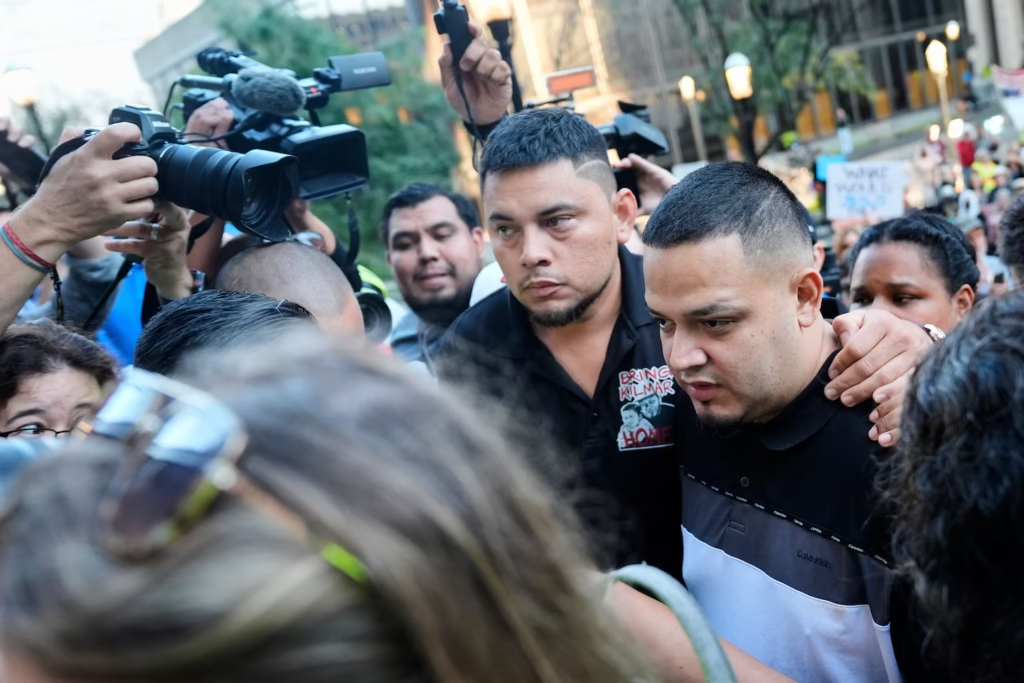The Kilmar Abrego Garcia deportation case has once again drawn national attention as the 30-year-old Maryland construction worker remains in custody. He was detained on Monday in Baltimore by U.S. immigration officers and is now being held at a Virginia detention center. Authorities say he could soon be deported to Uganda, a country he insists he has never called home.
Garcia’s case has become a focal point in the larger debate over immigration policy in the United States. His situation reflects the high stakes faced by many immigrants under stricter enforcement measures. His lawyers are working to block the removal order while raising concerns about his safety if deported.
Garcia had been released from a Tennessee jail last Friday before federal agents detained him in Baltimore. Immigration officials claim he is tied to the MS-13 gang, one of the most violent criminal groups operating in the U.S. and Central America. Garcia has denied the accusations, saying he has no ties to gangs and has been targeted unfairly. The government’s claim is central to the push for his deportation. Labeling individuals as gang members often accelerates removal proceedings. Yet, attorneys say such claims require strong evidence, and in Garcia’s case, they believe the evidence does not exist.
Lawyers for Garcia have filed court documents to stop the deportation process. They argue he has the right to express fear of persecution and torture in Uganda, the country listed for his removal. Garcia insists he has no real connection to Uganda and that his removal there would put him in danger. In court filings, his legal team also suggested an alternative: if he must be removed, he would prefer to be sent to Costa Rica. His request highlights the complex nature of international deportation cases, where questions about nationality, asylum rights, and human safety all come into play.
The legal challenge is ongoing, and the outcome will depend on how judges interpret both U.S. immigration law and international agreements on human rights. Deportation cases such as this often move quickly, but appeals and court reviews can slow the process. Garcia’s lawyers are using every legal option to delay or block his removal while making the case that deporting him would violate human rights protections.
The Kilmar Abrego Garcia deportation case has also become a symbol of the broader debate over current U.S. immigration policies. Supporters of stricter enforcement see the case as proof of the government’s determination to remove people linked to crime. Opponents argue that the system is too harsh and risks sending individuals into dangerous situations without fair review. Garcia’s story reflects the wider struggle of many immigrants who fear deportation under tightened rules. The administration’s approach has sparked protests, lawsuits, and debates across the country. Advocates say that many immigrants, like Garcia, face unfair labels and rushed proceedings.
For now, Garcia remains in custody at the Virginia detention center while his lawyers continue their appeal. The decision in his case could set a precedent for how similar cases are handled in the future. It will also test the balance between national security concerns and individual rights. His fate remains uncertain, but his detention has once again ignited discussion over the direction of U.S. immigration policy and how the government should handle cases involving disputed allegations.

